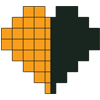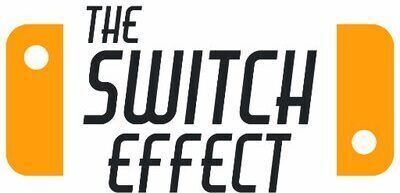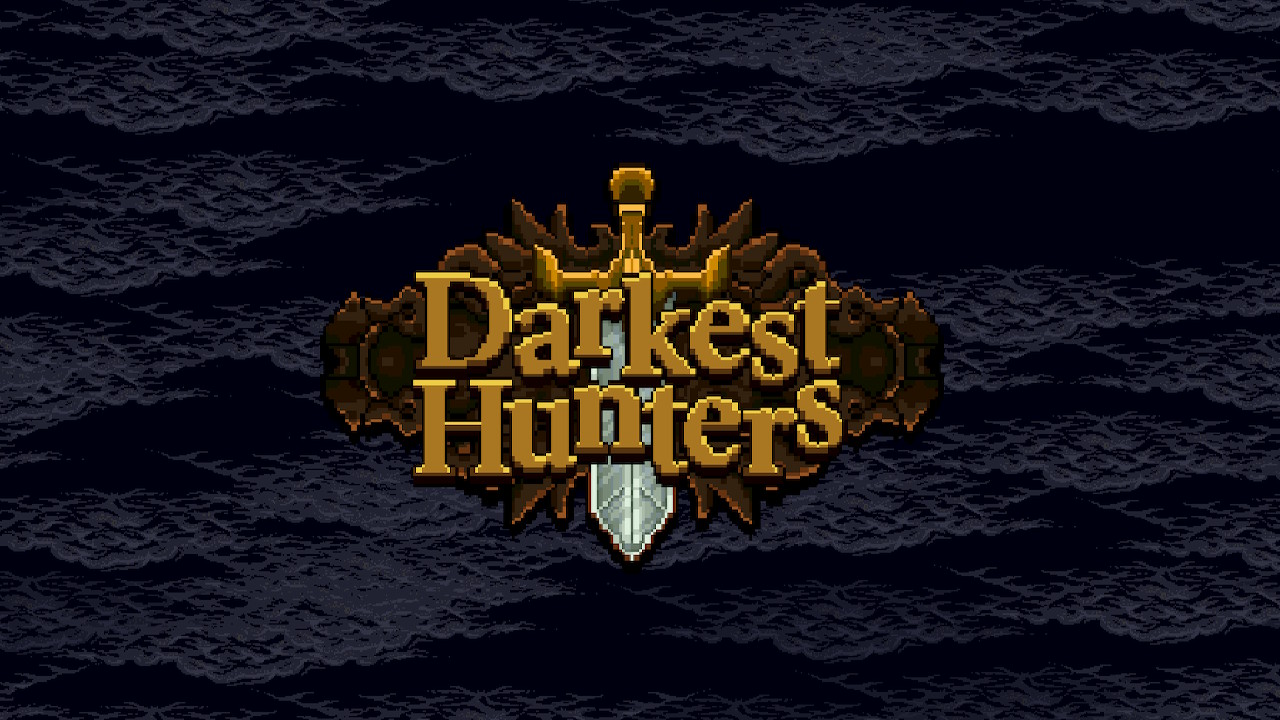Darkest Hunters
Nintendo Switch
Developed By: ECC Games
Published By: Ultimate Games, SA
Category: Role-Playing, Board Game, Adventure, Strategy
Release Date: 04.01.19
I’m a big fan of the RPG genre, and I think my record as a reviewer and gamer will bear that out. I think what truly fascinates me about the genre is its flexibility; the variety of mechanics and systems that can be applied to the core idea of role-playing is staggering. I love seeing the new ways that innovative game developers find to interpret the genre and create something that’s not quite like anything I’ve played before. ECC Games and their partners at Ultimate Games have served up the newest take I’ve seen on the RPG with their latest release, Darkest Hunters for the Nintendo Switch. It combines traditional RPG ideas with match game mechanics to create a unique, interesting, new experience.

Dimmest Story
For an RPG, Darkest Hunters isn’t especially story-rich. The game has a cool background, wherein a dark monster rises and wipes out nearly an entire civilization of elves. The game takes place twenty years later, after a generation of monster hunters has emerged, ready to push back the hordes of monsters and return peace to the world. Despite the strong background, the narrative from that point on is somewhat barren. During certain levels you can find letters which detail the ordeal of the sole survivor of the monsters’ initial onslaught, which paints a dreary but engaging picture of life after tragedy. So while the storyline is fairly thin, what’s there is interesting enough to experience.

Brightest Game Map
Darkest Hunters plays out over a series of missions taking place on a grid-based map. The map is covered in different colored gems, enemy tiles, treasure chests, and an exit door. To clear a level, you have to find and use the exit door. Treasure chests contain new equipment and gold, like every RPG ever. Moving your character tile into contact with an enemy tile launches a melee attack – there are other ways to attack, but we’ll get to that in a second. Darkest Hunters’ most interesting game mechanic comes from the colored gems, however.
There are four colors of gem, each one corresponding to one of your character’s resource pools and a magical element. Green gems replenish HP and carry the poison element, red gems replenish your physical attack points and have the fire element, blue gems fill your magic attack points and employ the ice element, and finally yellow gems are good for one gold coin apiece and carry the lightning element. You move around the game board by stringing together gems of the same color to make a path forward. You create special gems by stringing together at least five gems; every five gems you combine, the special gems gain a level. Collecting a level one gem will collect gems along the row or column as well as dealing damage to any enemies in the attack range. At every level up, the special gem’s area of effect grows larger and more powerful.

Simplest Combat
There are four ways to fight enemies; melee attacks, ranged attacks, magic spells, and special gems. Melee attacks are initiated by moving your character tile into contact with an enemy’s character tile. Ranged attacks are performed by holding down the ranged attack trigger and selecting an enemy to target. Magic attacks are performed by holding down the magic attack trigger and selecting a target; magic attacks are very powerful and attack over a large area of effect, but they consume lots of magic points so they can be tough to string together. Melee and ranged attacks consume your physical attack points – unless you have a weapon that has a magical element equipped – but they consume a pretty small number of points, making them easier to use multiple times in a row.
Attacking with special gems can be done in one of two ways. First, you can just typically collect the gem my moving up and collecting it, unleashing its area of effect, which damages any enemy caught in its range with magic damage related to its element. You can also collect a special gem as part of a regular move and end that move with a melee attack, adding the special gem attack damage to your melee attack. Combat is fairly simple once you get the hang of it, and, unfortunately, not that visually interesting. However, the concept of the game is interesting, combining resource management elements with matching puzzle games to create a rather unique gameplay experience.
The strategy involved in picking which gems to collect during a fight sequence introduces a very satisfying tactical element to the game. Do I focus on replenishing whichever of my attack pools are running low? Do I create a special gem even though doing so will mean I can’t attack this round, but maybe the special gem’s added damage will make up for it the next round? Do I just find a long string to use to make my escape for now? Is that even an option? Despite the simple game design and easy execution, Darkest Hunters manages to pull a satisfying experience from relatively shallow gameplay.

Shiniest Stars
Darkest Hunters has five different areas (forest, desert, etc…) each broken up into twelve levels. Every fourth level is a boss fight against a huge monster. Each regular level has six challenges and boss fights have three. For every two challenges you complete in a regular level or every challenge you complete in a boss fight, you get a star. Every star comes with a special reward; big piles of gold for the first two stars, and a high-level treasure chest for the final star. Beating a level unlocks the next level, but to unlock a new area, you need to have collected the required number of stars. I kind of didn’t like having to collect the stars to advance to a new area, if I’m honest; it necessitated a lot of backtracking to finish challenges that simply can’t be done in one playthrough of a level. If the challenge is to defeat ten wolves, and there are only six enemies in the level, you have to play through the dang thing three times to get there. While the game system was interesting on its own merits, it felt like the game stalled when I was stuck trying to collect stars to get to the next area.

Standard-est Character Building
The RPG progression elements for your character are pretty straightforward; you get experience points for every enemy you defeat and every gem you collect. When you level up, you get three attribute points to use to increase your HP, physical attack, or magic attack pools by one point. It’s fairly simple, but offers some control over your character’s progression and playstyle. Equipment management is a little more innovative; generally, whenever you collect equipment, you collect more than one copy. Every few copies of a piece of equipment you collect, you can pay a fee to increase that item’s level, strengthening its attributes; weapons do more damage, and armor reduces more damage.
You can also pick up items in the town menu between missions. You can visit the blacksmith to buy new weapons and armor; generally he has a limited selection, but he will have ten copies of everything he carries, which is more than enough to level an item up once. There’s a magic shop which is where you buy and equip new spells. At the tavern you can do a number of things, like read any letters you have collected, change your character’s portrait and background, and view a bestiary of monsters you have defeated. While the game’s character customization options aren’t as deep as, say, Skyrim, there is still enough on offer here to keep the game interesting.

Retro-est Graphics
Darkest Hunters employs a retro, pixel-based visual style that is simple but attractive – in small doses. During gameplay, the screen is almost always dominated by row after row of gems, which can get kind of monotonous after a while. While the gameplay stays pretty interesting despite a lack of variety, the visuals can get a little boring after a few levels. Which is kind of a strength in Darkest Hunters, too; it’s a perfect casual RPG to play on the go. You can whip it out and play on the train or waiting in line somewhere, or just when you have a half hour to kill. The music sets the mood fairly well; it is dour and foreboding, building an atmosphere fitting the game’s setting and backstory.
Playability-est Playability
Darkest Hunters doesn’t make any use of the Switch’s motion controls, but it does use the touchscreen controls in undocked mode. I said before that it’s a good casual RPG to play on the go, and the touchscreen controls really reinforce that idea. I preferred the touch controls to using a controller; they were easier and more intuitive. You just have to tap what you want to use instead of using the controller scheme which can be a little more complicated to figure out. Because of that, I recommend Darkest Hunters for undocked play.
TL;DR: Casual board game RPG with a cool game system that’s generally fun but best in smaller doses.





Buy Darkest Hunters
$5.30
Follow ECC Games
Follow Ultimate Games, SA

[Review] Hello Kitty and Friends Happiness Parade – Nintendo Switch

Developed By: Dabadu Published By: Rogue Games Categories: Rhythm Release…






